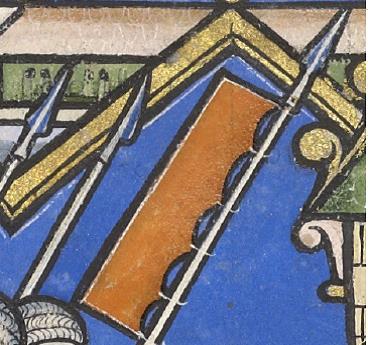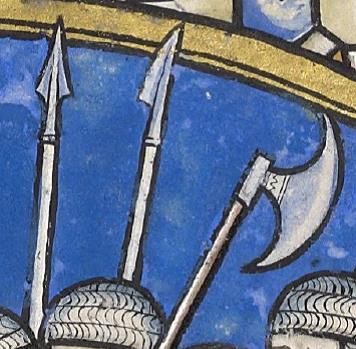I wonder what they were like in practice and what sort of chore they were for. On a long pole you could get lots of leverage, but such a small head isn't liable to impart much energy into the target (tree limb or whatnot) - not a limb lopper, I'd guess.
M.
It might depend on what kind of 'limb' you're going after. :eek: .....McM
| M. Eversberg II wrote: |
| I wonder what they were like in practice and what sort of chore they were for. On a long pole you could get lots of leverage, but such a small head isn't liable to impart much energy into the target (tree limb or whatnot) - not a limb lopper, I'd guess. |
My impression is that a knife-like blade isn't as useful on a long pole as a hooked blade (or maybe a spade-shaped blade, for cutting with a push). However, many socketed modern agricultural tools have short handles, 1 foot long or less. If blades like this are agricultural, I'd expect to see them with short handles.
Socketed knives aren't very common today, but there are some, and have been some in the past. Could be a kitchen knife, butcher's knife, etc.
(And there are knives with handles built like sockets, but not intended for use as sockets - just integral hollow open-ended handles.)
Surprised nobody's brought up this image from the Morgan Bible which shows a single-edged spear. It looks similar to the other examples posted and the blade shape is distinct enough from the other spears in the image that I think it unlikely to be artistic error.
 Attachment: 407.07 KB
Attachment: 407.07 KB
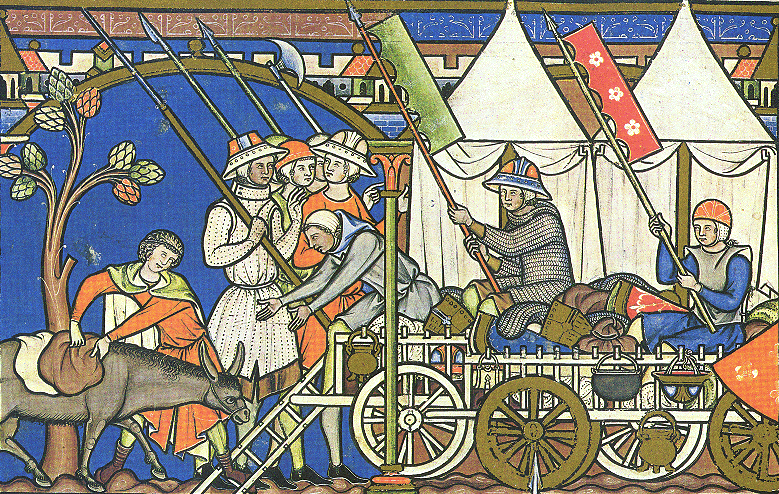

A slightly clearer photo from the Morgan Library
 Attachment: 67.65 KB
Attachment: 67.65 KB
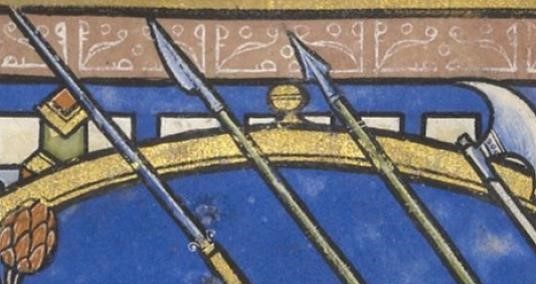

BNF Franšais 786, fo.13v, 1275-1300
The color image of the miniature available through Mandragore isn't very high resolution, while Gallica only offers a b&w copy.
 Attachment: 119.32 KB
Attachment: 119.32 KB
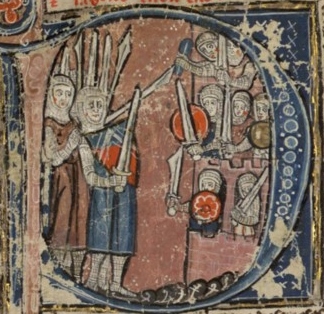
 Attachment: 202.16 KB
Attachment: 202.16 KB
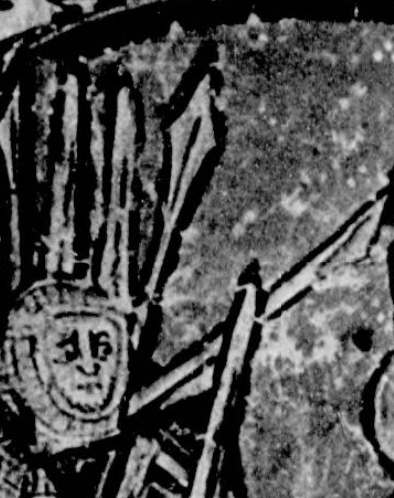
The color image of the miniature available through Mandragore isn't very high resolution, while Gallica only offers a b&w copy.


In another Maciejowski example, this group from folio 9v seems to have a single edged example at the far right.
 Attachment: 31.84 KB
Attachment: 31.84 KB
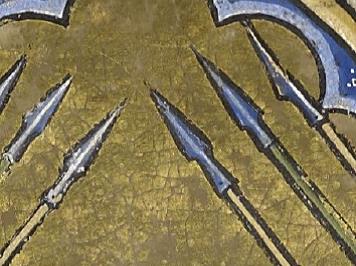

As already said, we can't rely on illustrations to be photo-accurate. If something in an illustration can't be corroborated with other evidence then our interpretation of the illustration is probably wrong. Posting more illustrations isn't helping.
| Dan Howard wrote: |
| As already said, we can't rely on illustrations to be photo-accurate. If something in an illustration can't be corroborated with other evidence then our interpretation of the illustration is probably wrong. Posting more illustrations isn't helping. |
While I agree that artistic representations are not photographs, they clearly represent something. In this case, I think these miniatures represent different styles of spear heads. The case that they are all from the 13th century and French may also have significance. The physical survival of single-edged socketed knives or tools is also noteworthy.
How do you propose we have mis-interpreted these pictures? If it isn't a single-edged spear head, what is it supposed to be? Is the only valid evidence an archaeologically discovered single-edged spear head from a military context???
For a start we need a physical example of one of these things. Something that was found in martial, not a domestic context.
Page 2 of 2
You cannot post new topics in this forumYou cannot reply to topics in this forum
You cannot edit your posts in this forum
You cannot delete your posts in this forum
You cannot vote in polls in this forum
You cannot attach files in this forum
You can download files in this forum
All contents © Copyright 2003-2006 myArmoury.com — All rights reserved
Discussion forums powered by phpBB © The phpBB Group
Switch to the Full-featured Version of the forum
Discussion forums powered by phpBB © The phpBB Group
Switch to the Full-featured Version of the forum
